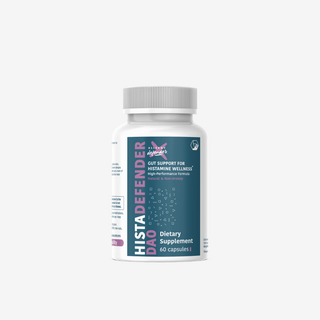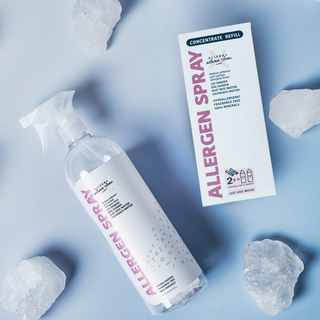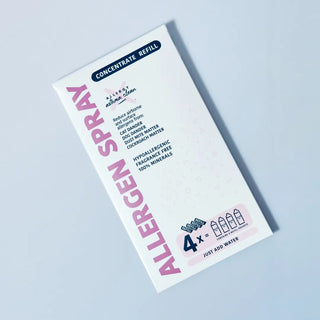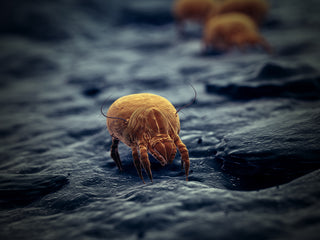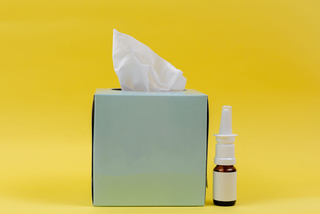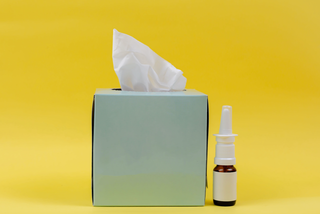What is Diamine Oxidase and Why Does It Matter?
If you're not feeling well, you've done everything you can think of to get better, including going to health professionals, it just might be time to dig deeper and look at the role histamine could be playing in your body to make it feel unwell. Looking at histamine levels is fairly new but the results, if it is histamine, are astounding. Diamine oxidase can help your body reduce histamine levels. It's surely worth a look:
Diamine oxidase (DAO) is a key enzyme responsible for breaking down histamine, particularly in the digestive tract. By breaking down histamine from foods, DAO helps prevent excessive histamine from entering the bloodstream and causing you various uncomfortable symptoms. When DAO activity is insufficient, histamine build up may develop, resulting in a variety of symptoms that can impact your quality of life.
Understanding Histamine Intolerance: More Than Just Allergies
Histamine intolerance occurs when your body cannot efficiently break down histamine, leading to its accumulation. Unlike food allergies, histamine intolerance is not an immune-mediated reaction but is primarily due to reduced enzymatic activity—most notably, DAO deficiency.
Common Symptoms of Histamine Intolerance
Symptoms associated with histamine intolerance include:
-
Headaches and migraines
-
Digestive issues (bloating, diarrhea, stomach pain)
-
Skin reactions (hives, itching, flushing)
-
Respiratory symptoms (nasal congestion, asthma-like symptoms)
-
Cardiovascular effects (low blood pressure, arrhythmias, rapid heart rate)
-
Fatigue and sleep disturbances
-
Anxiety and mood changes
Symptoms often appear within 30 minutes to several hours after consuming histamine-rich foods, making diagnosis challenging.
The Science Behind DAO and Histamine Breakdown
DAO is primarily produced in the small intestine, as well as in the kidneys. Its main role is to degrade dietary histamine before it is absorbed. DAO converts histamine into an organic compound called imidazole acetaldehyde, which is then further metabolized and eliminated. This process helps keep histamine at safe levels and prevents symptoms in most people.
What Causes DAO Deficiency?
Factors that can reduce DAO activity include:
-
Genetics
-
Certain medications (antibiotics, antidepressants, painkillers, and alcohol can inhibit DAO)
-
Digestive disorders (inflammatory bowel disease, celiac disease, small intestinal bacterial overgrowth)
-
Nutritional deficiencies (vitamin B6, vitamin C, copper, zinc)
-
Hormonal fluctuations (estrogen can inhibit DAO, affecting symptoms during menstrual cycles or pregnancy)
Foods High in Histamine: What to Avoid
High-Histamine Foods
-
Aged cheeses and fermented dairy
-
Cured and processed meats
-
Fermented foods (sauerkraut, kimchi, pickles)
-
Alcoholic beverages (especially wine and beer)
-
Aged and smoked fish
-
Tomatoes, spinach, eggplant
-
Chocolate and cocoa products
Natural Ways to Support DAO Function
Dietary Strategies
A low-histamine diet—reducing or avoiding high-histamine foods—can help manage symptoms. Individual triggers vary, so food diaries and elimination diets are often recommended.
Lifestyle Modifications
Managing stress, getting enough sleep, and regular exercise may support overall health, though direct effects on DAO are not well studied. Avoiding DAO-inhibiting substances, such as alcohol and certain medications, can also help.
DAO Supplements: A Powerful Solution
Struggling with histamine overload? You're not alone—and we made HistaDefender DAO for people just like you.
This isn’t just another DAO supplement. HistaDefender DAO is crafted with care to help support your body’s natural ability to break down histamine.
Testing for DAO Deficiency and Histamine Intolerance
Tests include:
-
DAO activity tests (measure DAO levels in blood, but their reliability is debated)
-
Histamine/N-methylhistamine ratio in urine
-
Comprehensive stool analysis (to assess gut health)
However, DAO activity in blood does not always correlate with symptoms, so clinical evaluation is crucial.
Managing Histamine Intolerance Long-Term
Management typically involves a combination of dietary changes, addressing underlying health issues, and, if needed, supplementation. The goal is to improve DAO function and gradually reintroduce foods as tolerated, ideally with professional guidance

